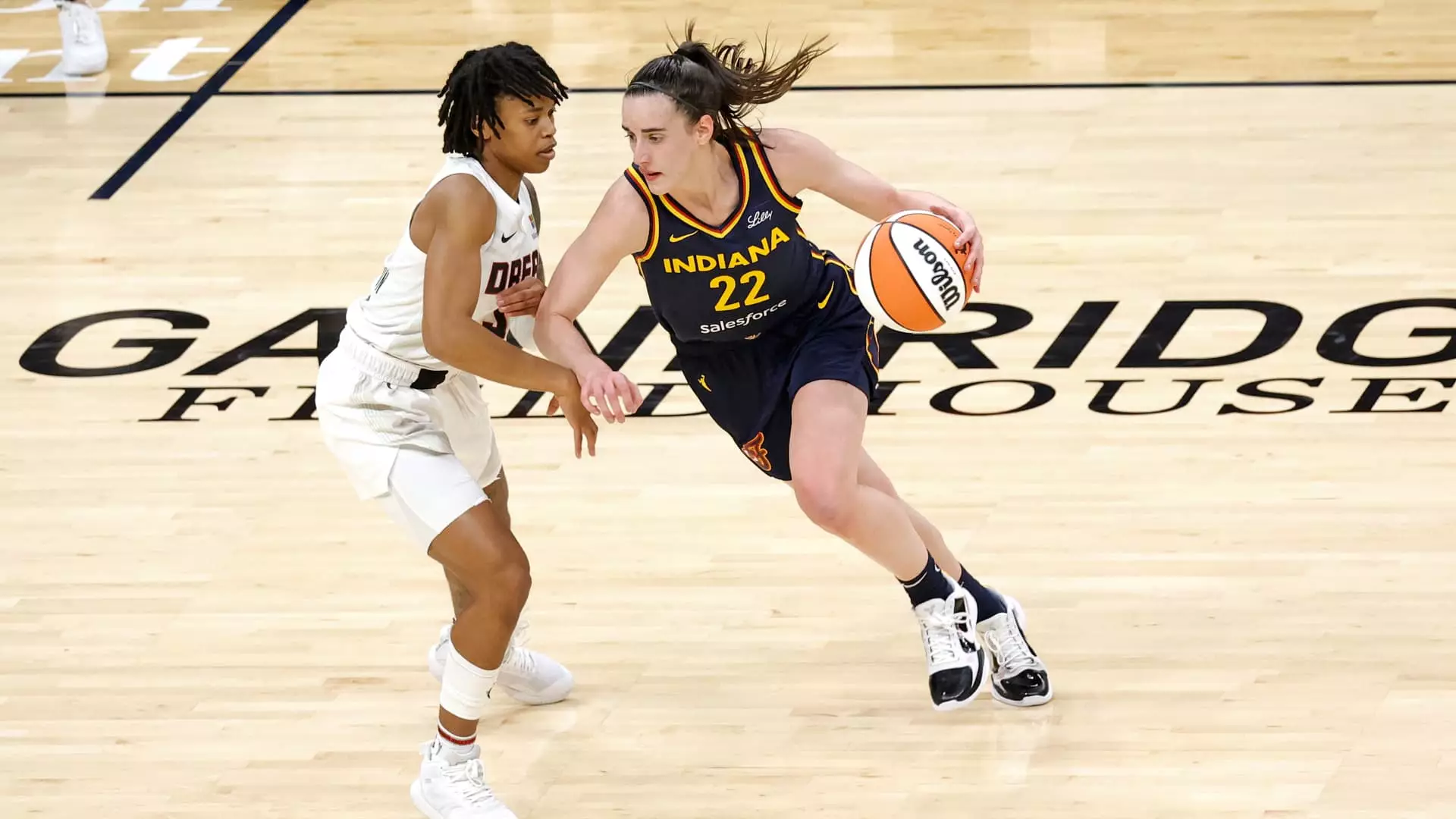The Women’s National Basketball Association (WNBA) has made monumental strides in its quest for visibility and relevance in the sports landscape, particularly evident during the 2024 season. With a remarkable surge in both viewership and attendance, the league has established itself as a force to be reckoned with, largely propelled by the emergence of young talents such as Caitlin Clark and Angel Reese. These stars not only captured the attention of fans but also represented a new generation of athletes whose influence transcends the basketball court.
According to WNBA’s recently released data, the league witnessed over 54 million unique viewers this season—a record-breaking achievement. This remarkable statistic spans across a multitude of networks, including major players like Disney’s ABC, ESPN, and CBS. Furthermore, a resurgence in attendance underscores the league’s growing popularity; it hit levels not seen in over two decades, with nearly 50% growth compared to the previous season. With 154 games sold out throughout the year, the WNBA demonstrated an unprecedented level of fan engagement compared to the mere 45 sellouts recorded in 2023.
What contributed to this year’s explosive metrics was a potent mix of a top-tier rookie class and the competitive spirit exhibited by existing teams. Caitlin Clark, a standout guard for the Indiana Fever, and Angel Reese, a dynamic forward for the Chicago Sky, not only raised the level of play but also captivated audiences with their standout performances. Their contributions have helped elevate the intensity of the league, especially as the Las Vegas Aces pursued an impressive third consecutive championship.
This combination of talent is a significant part of why the WNBA has attracted a lucrative media rights deal. The recent announcement of expansion, including plans for a 15th team in Portland by 2026, signifies not just growth in numbers, but also in the influence and endorsement the league commands in the larger sports market.
However, this newfound popularity doesn’t come without its challenges. The increased spotlight on the WNBA has also amplified the instances of online harassment and racism experienced by players. WNBA Commissioner Cathy Engelbert faced scrutiny for her initial response to these issues, which some perceived as inadequate. Her later clarification, stating that she opposes hate and racism, highlighted a critical gap between the league’s triumphs and the struggles its athletes face, underlining the complicated dynamic of success within a sporting environment that still struggles with equality and respect.
In addition to viewership and attendance, the WNBA has also seen encouraging growth in merchandise sales and social media engagement, materially increasing its cultural footprint. The league’s social media accounts attracted nearly 2 billion video views, marking a drastic increase from the previous season’s figures. This rampant growth in engagement points toward a cultural shift where women’s sports are increasingly viewed not just as an alternative to men’s leagues, but as compelling and dynamic in their own right.
Importantly, these advancements in visibility have led to a groundbreaking $2.2 billion media rights contract spanning over 11 seasons. This agreement is especially noteworthy, as it reflects an acknowledgment of the WNBA’s growing popularity within the broader ecosystem of professional sports, an area previously dominated by men’s leagues.
As the WNBA continues into the postseason, featuring thrilling matchups such as the semifinal clash between the Las Vegas Aces and the New York Liberty—the previous season’s runners-up—the league is poised to redefine its legacy in the world of professional sports. With the combination of talented players, strategic expansions, and heightened media attention, the WNBA stands on the precipice of a transformative era.
The 2024 season has not only been a landmark year for viewership and engagement but has also highlighted the ongoing battle for equality within sports. As the league elevates itself to new heights, stakeholders, players, and fans alike must come together to ensure that the narrative woven by triumphs also addresses the challenges still remaining. The WNBA’s journey of resilience, growth, and empowerment appears to be only just beginning.

